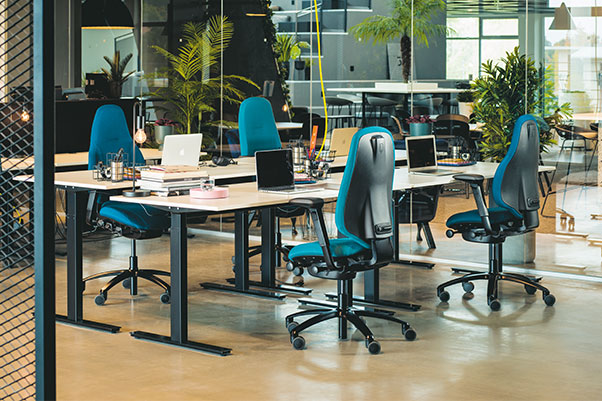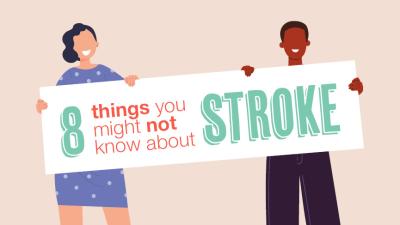
ADHD in the workplace: how can we help employees reach their full potential?
Attention deficit and hyperactivity disorder (ADHD) is a commonly misunderstood neuro-behavioural disorder which affects adults and children - often impacting family life, relationships, careers and long-term self-esteem.
There are lots of myths surrounding ADHD, from the idea that it's not a 'real' medical disorder, to the misconception that only children have it.
Unfortunately, there is still a fair amount of stigma around ADHD, with people commonly dismissing it as an excuse for laziness, ineptitude and bad behaviour.
In reality, while ADHD symptoms vary between individuals, there is a lot employers can do to support people with ADHD at work. Here, we take a look at what ADHD is, how symptoms might manifest at work, and the ‘game changers’ every employer should know about.
What is ADHD?
Adult ADHD has only been recognised as a 'real' condition in the UK by NICE guidelines since 2007. There is still much research needed to improve our understanding, but experts believe ADHD is likely to be related to dopamine levels in the brain. Namely, that people with ADHD don’t process this neurotransmitter - critical for mental stimulation, interest and reward - effectively in order to function as well as those with typical levels of dopamine.
There are three different types of ADHD:
- Predominantly hyperactive impulsive ADHD
You have problems with interrupting, talking lots and taking risks. - Predominantly inattentive ADHD
You have a hard time paying attention, remembering things and being organised. - Combined ADHD
A mix of both behaviour types.
These are of course all very common symptoms experienced by lots of people who would be considered 'neuro-typical', which is why the diagnosis of ADHD is often met with scepticism. But for people with ADHD, the symptoms are pronounced, chronic and they can have a noticeably negative impact on daily life.
Adult ADHD in the workplace

Managing ADHD and work can sometimes be problematic. Company life is, by nature, structured and systematic: there are deadlines to meet and processes to follow. For a person whose mind is constantly wandering around searching for the most stimulating thought or task, it can be very difficult to conform to the rules and stay on track.
For many people with ADHD, interest trumps importance. So if you have ADHD, you might find you can become entirely absorbed for hours on end in an activity that mentally stimulates you, while completely forgetting about the mundane admin tasks you are supposed to be doing too.
Unlike the typical employee, adults with ADHD may not feel the pressure and obligation of needing to complete an 'unstimulating' task, no matter how important it is generally deemed to be.
The reward of pleasing a manager does not match up to the dopamine reward of complete creative absorption. Likewise, the tendency to be impulsive means not dwelling on the consequences. If a task isn’t stimulating, it can easily slip down the list of priorities without you even being aware that this is happening. In an instant, something you had every intention of doing can be wiped out by a more interesting thought or task.
As we know, the consequences of doing this in the workplace can be serious, leading to warnings, demotions and even dismissal. Even for the most intelligent and ambitious people, ADHD can seriously hamper the chance of success.
ADHD and work: perception vs. reality

ADHD can wrongly be perceived by others as laziness, selfishness, self-absorption and carelessness. Friends, family, colleagues and employers of people with ADHD can become increasingly frustrated by certain behavioural patterns. They might begin to think the person is being purposefully late all the time, that they have no willpower, or perhaps lack the intelligence to keep their belongings in order.
Research shows that ADHD has no bearing on an individual's intelligence. Many ADHD sufferers are extremely bright, highly creative and often just as frustrated with themselves as others are with them. It can feel as though they are constantly letting themselves down with stupid mistakes. As much as they want to take control, be in order, please others and achieve great things, the way their minds naturally work can make it more of a challenge to do this.
As employers, it is vital that we understand this about our ADHD employees and do what we can to help them reach their potentials in the workplace.
Are there benefits to ADHD?
While many of the behaviours mentioned above can have a detrimental effect on ADHD sufferers, some typical ADHD behaviours can be highly advantageous to employers, including:
- The ability to see the ‘big picture’
- Being creative and inventive
- The ability to focus intensely for long periods of time
- High levels of energy
- Risk-taking leading to discoveries
- Being intuitive.
For both employers and employees to see these benefits, we need to consider ADHD in the workplace with strategies, great equipment and clever design.
How to work with ADHD: tips for employers
If you want to harness the talents and abilities of your employees with ADHD, then it's vital that you: a) understand the condition and b) take actions to help them get on better in the workplace.
In fact, under the Equality Act 2010, an employee with ADHD may be considered to have a disability if their condition has a 'substantial', 'long-term' negative effect on their day-to-day lives. In this case, you are legally obliged to make 'reasonable adjustments' to support them in the workplace. Plus, even if employees with ADHD are working from home, you have the same responsibility to support their ways of working.
You never know, a simple tweak could be a complete game-changer for someone with ADHD. Here are some easy-to-implement ideas for improving their working environment:
1. Use sit-stand desks

A quick browse on the ADHD feed on Reddit shows some of the advantages of standing desks for ADHD. These desks are designed to move up and down, and people are finding they help when it comes to focusing on computer tasks. Here's what some of them had to say:
"I've been using an adjustable standing desk for 5 years now, and I love it for a variety of reasons. It does make it easy to fidget and stay focused."
"I know it's been said around here before from time to time, but I finally got a standing desk at work, and its an absolute GAME CHANGER! Now when I'm at my sit-stand desk, I'm constantly focused. Can't explain it, but when I was sitting, I was more likely to get distracted and drift into the internet or a game on my phone. There's something about standing up that just keeps me focused on my task at hand. If you have a desk job, try a standing desk. Amazing."
We have lots of ergonomically-designed sit-stand desks to choose from, and they don't have to be costly. For an affordable option, simply place our Opløft on top of your existing surface to transform it into a height-adjustable platform.
2. Create greater flexibility

Offices can be busy, stimulating places. For someone with ADHD, the noise, movement, conversations and activities in the office can make it hard to focus. Allowing people with ADHD to work from home, or better - from a variety of environments – will help them concentrate and prevent boredom.
For advice on moving to a flexible working policy, head over to our consulting pages where you can access free information and contact our experts for a consultation.
3. Provide wireless noise-cancelling headsets

Wireless headsets allow users to get up and walk around while talking on the phone, which is perfect for a chronic fidgeter. They also allow greater audio clarity so users are less likely to be distracted by external sounds.
4. Create quiet spaces

Consider redesigning your office space to offer different kinds of spaces for your employees. By including quiet, more secluded areas, employees with ADHD can retreat for some quiet time if they need a change of environment or to focus.
5. Think about seating

It’s also a great idea to invest in comfortable seating for your office spaces. For people with ADHD, a chair is important. A model that offers flexibility and movement, like the 3Dee Active Office Chair, could be a huge benefit.
Choosing different seating for quiet spaces is a good investment too. This way, you can offer employees a respite from their everyday office chair.
Download our Invest in Seating brochure for some inspiration.
6. Provide a mentor

Offer ADHD employees the option to join up with a workplace mentor who will help them with behind-the-scenes planning, such as time management and prioritising of work tasks. Having a neutral person rather than a manager doing this will prevent any feelings of embarrassment that can come with needing extra help.
7. Encourage notes in meetings

Record meetings using a high-quality voice recorder like the Olympus DM-770 so your employee can listen back if they missed anything at the time. Great notes won’t just be beneficial to employees with ADHD, but with your wider team too.
The future of ADHD in the workplace
With the right support and understanding in place, you can help any employee with ADHD to overcome the challenges they face in their professional lives to unleash their true potential.
Do you need more advice on how to help employees with cognitive differences? If so, book a Neurodiverse Workplace Needs Assessment. This detailed assessment gives a thorough insight into your workers’ specific needs, in line with the Equality Act.
Also, have a watch of the Posturite webinar ‘Understanding ADHD in the workplace’.










